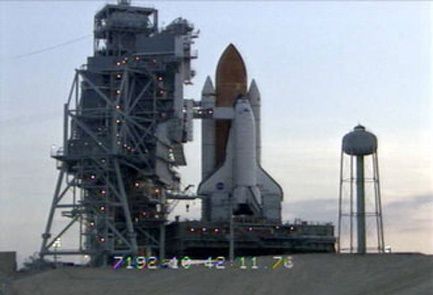Sky-High Expectations: Spaceflight Less Safe Than You Think

The news from NASA in early August was alarming: The space shuttle was again threatened. A chunk of insulating foam flew off during launch and gouged Endeavour's thermal tiles. The damage was only a few inches long, but as the 2003 Columbia accident showed, any damage in the tiles that shield the shuttle during re-entry can be fatal.
NASA is optimistic, but the murmurs could be heard: Insulating foam damage again? Didn't they spend years of research and millions of dollars fixing that problem? Don't they know what they are doing?
Well, yes. With the best technology in the world and plenty of patriotic pride, it's easy to forget that even sub-orbital spaceflight is both difficult and dangerous.
If the public underestimates the danger of shuttle flight, NASA itself shares some of the blame. A Presidential Commission was appointed to study the 1986 Challenger shuttle accident and its causes. At first glance the culprit was a mechanical problem: the failure of small O-rings to seal, leading to a catastrophic chain reaction. Yet the real fault for the explosion went far beyond a simple gas leak.
The Commission was very critical of NASA’s procedures, finding serious flaws in the decision-making process that led to the launch. NASA had ignored warnings from scientists that the O-rings on the solid rocket boosters had repeatedly failed safety tests at low temperatures.
Physicist Richard Feynman was on the commission, and in his appendix to the Commission’s Report wrote that NASA believes the probability of a shuttle failure to be a thousand times less than it actually is. “One reason for this may be an attempt to assure the government of NASA perfection and success in order to ensure the supply of funds,” Feynman wrote.
Space agencies, including NASA, must project a positive, can-do attitude, and often downplay the risks of spaceflight. In recent years space programs and launches have been trivialized, commercialized, and politicized. In 2001, the world’s first space tourist, Dennis Tito, went into orbit. The following year pop star Lance Bass announced preparations to go to the International Space Station. (Both were Russian cargoes; Bass later dropped out, because of financial rather than safety issues.)
Sign up for the Live Science daily newsletter now
Get the world’s most fascinating discoveries delivered straight to your inbox.
Fueled by patriotism, a lucky streak, and NASA’s confidence, Americans have been coaxed into complacency about the safety of manned spaceflight.
Each successful shuttle launch should be applauded for the amazing feat it is, an example of human ingenuity overcoming not only gravity but great odds. Rockets and space shuttles are incredibly complex machines, with tens of thousands of important parts, all---as the grim joke goes---manufactured by the lowest bidder. Each launch takes years of preparation and hundreds of brilliant, dedicated professionals. Their successes are often taken for granted, while their failures are obvious and tragic.
Americans expect perfection and safety from NASA, but the public should be amazed at the rarity of problems and mistakes. NASA is not eager to admit it, but life-threatening crises and potential problems will always go hand in hand with space shuttle flights. Optimism should be tempered with realism about how inherently dangerous and complicated it is to put humans into space. We have not mastered spaceflight, and should not fool ourselves into thinking otherwise.
As Feynman concluded in his report, “For a successful technology, reality must take precedence over public relations, for nature cannot be fooled.”
Benjamin Radford is managing editor of Skeptical Inquirer science magazine. He is author of "Media Mythmakers: How Journalists, Activists, and Advertisers Mislead Us" (2003). This and other books are noted on his website.











